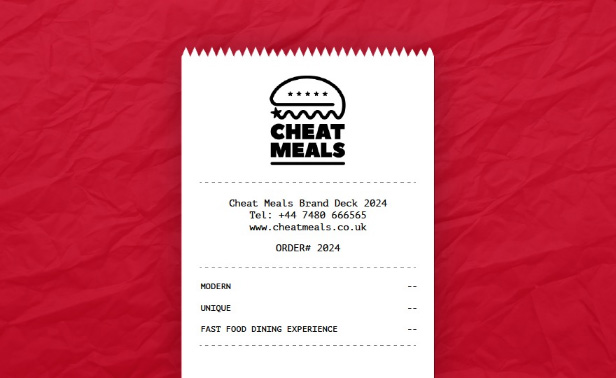2025 kicked off with the biggest shift in digital marketing in years. Email got hit hard, and AI moved faster than most brands can follow
Updates from Gmail and Outlook have made it harder to get messages into inboxes. Engagement is down, open rates are unreliable and bulk sends now risk being flagged or bounced.
So what now? Just like we have always had to. Great marketing is about attention, relevance, and timing. The tools might change, but the goal never does. Embracing new tech like AI, rethinking your content strategy and focussing on other key marketing channels is how you stay ahead.
Future proofing email
Email marketing isn’t dead, but it requires a significant rethink. Rather than abandoning it completely, a refined approach is necessary. This involves delivering unique content at scale by ultilising spintax or dynamic content tools to create multiple variations of email copy. This ensures subscribers receive more personalized and less repetitive messages, which can improve both deliverability and engagement.
Furthermore, lowering send volumes is crucial; focusing on quality over quantity by sending highly targeted emails to segmented lists, rather than mass broadcasts, can improve sender reputation and reduce the likelihood of being flagged as spam. For those with larger sending volumes, using multiple authenticated domains can spread the load and mitigate risks associated with a single domain’s reputation, ensuring better deliverability. Finally, introducing automation for tasks like welcome series, abandoned cart reminders, and re-engagement campaigns can nurture leads and customers efficiently, significantly reducing manual management time.
Smarter channels, smarter targeting
Despite shifts in email performance, Google Search Ads and Display Ads remain extremely powerful.
Search Ads
Google has doubled down on automation and machine learning. Google is now pushing users to use broad match keywords, which can burn through budget extremely fast without proper control. That is why it’s crucial to monitor search terms, focusing on negative keywords.
Buyer intent keywords are still key. These are the searches made when someone is ready to act, not just browsing. Avoiding vague terms and focusing on these high-conversion queries will really help a campaign’s performance.
Google Ads now supports direct integration via its API, enabling real-time sharing of conversion data. With live data flowing back into your campaigns you can optimise ad performance faster, allow Google’s AI to learn more quickly what works, and make smarter, data-led decisions.
Display Ads
Recent updates to the Google Display Network has expanded its reach by including inventory on platforms like X (formerly Twitter), allowing for broader audience engagement through a single platform. This is an ideal solution for targeting users who are in-market (actively researching products or services you offer) or have specific interests aligned with your brand, based on their browsing behavior and app usage.
Other strategies to consider
If email is falling short, it’s time to diversify your marketing mix. Here are some proven alternatives:
WhatsApp & SMS
Direct messaging channels like WhatsApp and SMS can be highly effective for immediate communication.
WhatsApp offers a richer messaging experience, supporting multimedia content. This makes it great for customer support interactions, personalised consultations, or sharing exclusive content with subscribers who have opted-in. Consent is paramount, and the tone should generally be more conversational and less formal than traditional marketing channels.
SMS messaging is best suited for time-sensitive offers, such as flash sales, appointment reminders, or critical service updates. Its primary strength lies in its exceptionally high open rates, often occurring within minutes of receipt. However, it’s vital to navigate privacy regulations like GDPR or CCPA carefully, ensuring explicit consent (opt-in) is obtained and easy opt-out options are provided. Messages should be kept concise and deliver clear value.
Social Ads
Paid advertising on social media platforms remains a strong tool for reaching specific demographics and interest groups.
Choosing the right platform is vital as each offers unique audience characteristics and ad formats. Your choice should be guided by where your target audience predominantly spends their time.
The success of social ads also hinges on compelling, platform-native creative and precise targeting. This means developing eye-catching visuals, engaging video content, and clear copy, then using the platform’s tools to narrow down your audience by demographics, interests, behaviors, and even by creating lookalike audiences based on your existing customers.
Exploring Further Channels
Beyond direct messaging and social ads, several other channels warrant consideration:
- Remarketing via social or display: Target people who visited your site but didn’t convert
- Content collaborations: Partner with influencers or micro-creators in your niche
- Podcast sponsorships: Great for niche B2B or engaged communities
- Live webinars: Use as lead-gen, then retarget attendees via other channels
- Offline and hybrid campaigns: Think direct mail, QR codes, or events — especially useful in saturated digital markets
A note on AI
Tools like ChatGPT are revolutionizing how marketers operate. They can generate content ideas, draft ad-copy, write email sequences, analyse customer behaviour patterns from data, segment audiences, and automate repetitive tasks like reporting or social media scheduling.
Specifically for content writing, AI excels at producing initial drafts for blog posts, social media updates, product descriptions, and even scripts.
Moreover, AI tools are invaluable for error checking and refinement. They can instantly spot grammatical errors, spelling mistakes, and awkward phrasing, acting as a sophisticated proofreader.
It’s not just about working harder, but working smarter by leveraging AI to enhance creativity, efficiency, and decision-making.
Conclusion
The channels you rely on today might not work tomorrow. But this isn’t bad news. It’s opportunity.
If you’re willing to pivot, test, and evolve, there’s still plenty of space to win.
Use AI to work smarter. And never stay too comfortable with one channel. Embrace simplicity in your messaging and automate as much as possible.

